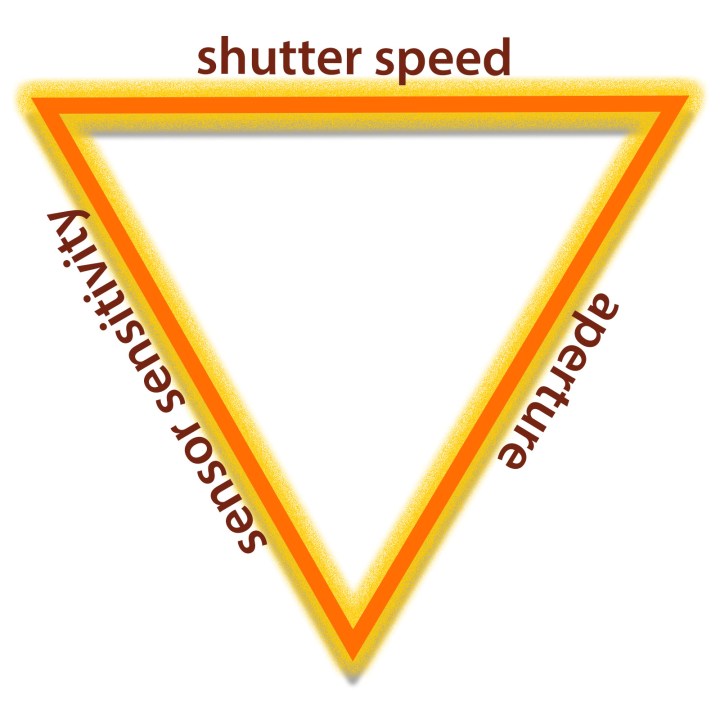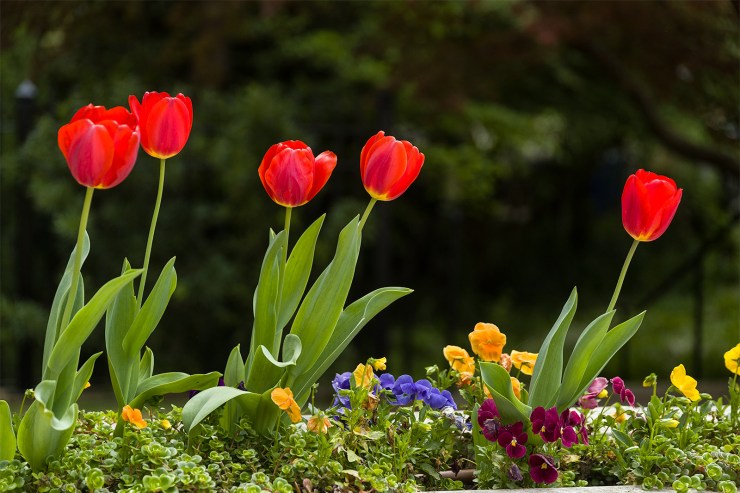And why should I give a you-know-what about it? The exposure triangle, simply, is the three ways of controlling the amount of light a camera captures. Two of these three settings provide creativity control, too.
The three sides of the exposure triangle
The sides of this equilateral exposure triangle are shutter speed, aperture and ISO value. The shutter speed is the time that light strikes the camera’s sensor. The aperture, like the irises in our eyes, controls the amount of light reaching the sensor. The ISO sets the sensitivity of the sensor to light.
That’s it. The exposure triangle is just that simple. And it is also kinda complicated. If there were such a thing as a three-sided seesaw, it would be the exposure triangle.

Balancing the exposure triangle
This is the sorta complex part. Let’s begin by saying that correct exposure is the total amount of light reaching the sensor at its ISO that reveals the true tone of the subject. In other words, the right combination of shutter speed, aperture setting and ISO value that shows a subject as it is in real life — not too bright, not too dark but just right — the Goldilocks — is a correct exposure.
Now, stay with me. There is only one exposure that can do this for a given lighting situation. There are many, many combinations of shutter speeds, apertures and ISO settings that will equal that one exposure.
Think of this as balancing the exposure triangle.
Keeping the right exposure right
If any of the three sides of the exposure triangle is changed, one or both of the others have to change to keep the amount of light the sensor sees exactly the same. This is the balancing act among time, amount and sensitivity. The rule is: Change one then adjust one or both of the others in the opposite direction to get back to that one amount of light that is the right exposure.
Here’s an example
The photo below has an exposure of 1/2000s, f/4.0 and ISO 400.

Here are just some of the exposures that are the same amount of light …
1/1000s, f/4.0, ISO 200: Lowering the ISO by one f/stop cuts the sensor sensitivity in half, so the shutter speed is slowed from 1/2000s to 1/1000s to compensate. I took some light away by lowering the ISO so I had to add light by slowing down the shutter speed to add light to maintain the exposure.
If I changed the aperture — aka the f/stop — I must adjust one of the other two controls. I’ll change the aperture to f/8. That is two stops less light, so I can add one stop of light by doubling the ISO from 400 to 800, and by slowing the shutter from 1/2000s to 1/1000s. This exposure — 1/1000s, f/8.0, ISO 800 — is the same amount of light as the original exposure of 1/2000s, f/4.0, ISO 400.
Remember if you take away from one setting, you must add an equivalent amount using the other two sides of the exposure triangle.
Tell your story with the second annual Visual Storytelling Conference!
Experience four days of interactive, online training sessions featuring a range of educational content with experienced photographers and content creators. This free event kicks off with a series of technical boot camps to build essential skills, followed by live, online sessions on photography, video, business and social media. Join live from March 10-13, 2022!
